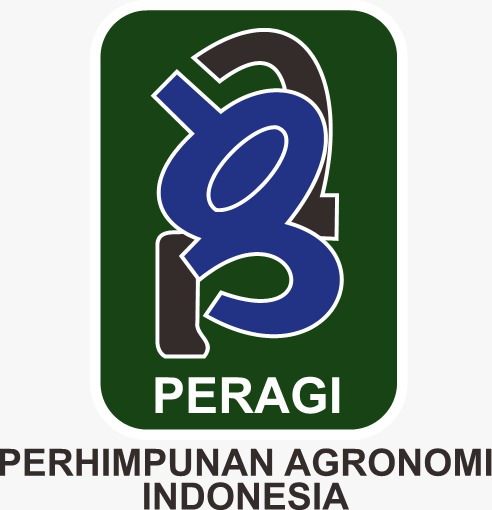Optimizing The Growth of Arabica Coffee (Coffea arabica L.) Typica Variety Seedlings through Planting Media Composition and Liquid Organic Fertilizer of Conch Eggs in Toraja
Abstract
This research investigates the impact of different planting medium compositions and the application of liquid organic fertilizer derived from golden apple snail eggs on Arabica coffee seedlings (Coffea arabica L.) growth of the Typica variety. Conducted over 12 weeks at the experimental garden of Toraja University, the study employed a Completely Randomized Design (CRD) featuring two primary factors: the composition of the planting medium (M1: topsoil, sand, pig manure in a ratio of 2:1:1; M2: topsoil, sand, pig manure in a ratio of 1:2:1; M3: topsoil, sand, pig manure in a ratio of 1:1:2) and the dosage of POC from golden apple snail eggs (K1: 100 ml/plant, K2: 200 ml/plant, K3: 300 ml/plant). The findings indicated that the planting medium's composition and POC dosage significantly influenced the coffee seedlings' height, leaf count, and stem diameter. The planting medium with a 1:1:2 ratio of topsoil, sand, and pig manure (M3) yielded the most favorable outcomes, achieving an average plant height of 18.06 cm, 4.54 leaves, and a stem diameter of 1.92 mm. Additionally, a 200 ml/plant dosage of POC from golden snail eggs (K2) resulted in a maximum plant height of 18.46 cm and an average leaf count of 4.57. and a stem diameter of 1.75 mm. The interaction between M3 and K2 (M3K2) produced the most significant results across all growth parameters, with a plant height of 24.67 cm, 5.33 leaves, and a stem diameter of 2.53 mm. This study underscores the importance of selecting suitable planting media and utilizing POC from golden snail eggs to enhance the growth of Arabica coffee seedlings, offering valuable insights for improving coffee cultivation practices through optimized media and organic fertilizer application.Downloads
References
Analianasari, A., Kenali, E., Berliana, D., & Yulia, M. (2022). Liquid Organic Fertilizer Development Strategy Based Coffee Leather and Raw Materials to Increase Revenue Local Coffee Robusta Farmers. IOP Conference Series: Earth and Environmental Science, 1012(1), 012047. https://doi.org/10.1088/1755-1315/1012/1/012047
BPS. (2019). Data BPS. Indonesia Dalam Angka.
Daun Limbong, M. (2022). Pengaruh Bokashi Kulit Buah Kopi dan MOL Nasi Basi Terhadap Pertumbuhan Tanaman Kopi Arabika (Coffea arabica L) Varietas Typica Pada Tanaman Belum Menghasilkan Tahun Pertama (TBM-1). Jurnal Ilmiah Agrosaint, 13(2), 2022.
Dwilyana, L., Hidayat, R., & Nugrahani, P. (2023). Pengaruh Media Tanam Dan Konsentrasi Poc Terhadap Tanaman Sawi Caisim (Brassica juncea L.). Jurnal Pertanian Agros, 26(1), 4393–4404.
Firdaus, N. K., Sobari, I., Pranowo, D., Sasmita, K. D., Wardiana, E., & Saefudin. (2023). Growth response of Meranti Liberoid coffee seedling to liquid organic fertilizer and dolomite application. IOP Conference Series: Earth and Environmental Science, 1230(1), 012203. https://doi.org/10.1088/1755-1315/1230/1/012203
Irawan, D., & Bisono, R. M. (2019). Pkm Appropriate Technology Training for Making Granule Organic Fertilizers in Gogodeso and Munggalan Villages. Jurnal ABDINUS : Jurnal Pengabdian Nusantara, 2(2), 215. https://doi.org/10.29407/ja.v2i2.12520
Jatsiyah, V., Rosmalinda, R., Sopiana, S., & Nurhayati, N. (2020). Respon Pertumbuhan Bibit Kopi Robusta Terhadap Pemberian Pupuk Organik Cair Limbah Industri Tahu. AGROVITAL : Jurnal Ilmu Pertanian, 5(2), 68. https://doi.org/10.35329/agrovital.v5i2.1742
Kariada, I. K., & Arsana, K. D. (2019). Application of liquid organic fertilizers for supporting organic arabica coffee development at Sub-district of Sukasada, Buleleng, Bali, Indonesia. IOP Conference Series: Earth and Environmental Science, 399(1), 012113. https://doi.org/10.1088/1755-1315/399/1/012113
Lubis, A. R. (2021). GROWTH RESPONSE OF ROBUSTA COFFEE (Coffea robusta L.) GROWTH ON CHICKEN CAGE FERTILIZER AND FERTILIZER LIQUID ORGANIC. Agripreneur : Jurnal Pertanian Agribisnis, 10(1), 19–27. https://doi.org/10.35335/agripreneur.v10i1.1947
Lubnan Dalimoenthe, S. (2013). Pengaruh media tanam organik terhadap pertumbuhan dan perakaran pada fase awal benih teh di pembibitan. Jurnal Penelitian Teh Dan Kina, 16(1), 1–11.
Meriatna, M., Suryati, S., & Fahri, A. (2019). Pengaruh Waktu Fermentasi dan Volume Bio Aktivator EM4 (Effective Microorganisme) pada Pembuatan Pupuk Organik Cair (POC) dari Limbah Buah-Buahan. Jurnal Teknologi Kimia Unimal, 7(1), 13. https://doi.org/10.29103/jtku.v7i1.1172
Putra, I., Yusrizal, Septiandar, Hadianto, W., Ariska, N., & Resdiar, A. (2021). Respon pemberian Pupuk Organik Cair (POC) Bongol pisang terhadap pertumbuhan dan produksi beberapa varietas Cabai Rawit (Capsicum frutencens L var. Cengek). Agrista, 25(1), 40.
Steven cipta putra. (2022). Fakultas pertanian universitas islam riau pekanbaru 2022. Pengaruh Aplikasi Kompos Limbah Akasia Dan Pupuk NPK 16:16:16 Terhadap Pertumbuhan Serta Hasil Tanaman Tomat (Solanum Lycopersicum L.), Fakultas Pertanian Universitas Riau Pekanbaru, 14.
Suhaila, Zahrah, S., & Sulhaswardi. (2013). Perbandingan campuran media tumbuh dan berbagai konsentrasi atonik untuk pertanaman bibit Eucalyptus pellita. Jurnal Dinamika Pertanian, 28 (3), 225–236.
Thana, D. P., & Tandirerung, W. Y. (2018). Respon Pertumbuhan Dan Produksi Tanaman Wortel (Daucus Carota L.) Terhadap Pemberian Pupuk Organik Cair. AgroSains UKI Toraja, 9(1), 1–9
Copyright (c) 2024 Driyunitha Driyunitha, Sion Oktafianus

This work is licensed under a Creative Commons Attribution 4.0 International License.
Authors who publish with Jurnal Agronomi Tanaman Tropika (JUATIKA) agree to the following terms:
Authors retain copyright and grant the Jurnal Agronomi Tanaman Tropika (JUATIKA) right of first publication with the work simultaneously licensed under a Creative Commons Attribution License (CC BY 4.0) that allows others to share (copy and redistribute the material in any medium or format) and adapt (remix, transform, and build upon the material for any purpose, even commercially) with an acknowledgment of the work's authorship and initial publication in Jurnal Agronomi Tanaman Tropika (JUATIKA).
Authors are able to enter into separate, additional contractual arrangements for the non-exclusive distribution of the journal's published version of the work (e.g., post it to an institutional repository or publish it in a book), with an acknowledgment of its initial publication in Jurnal Agronomi Tanaman Tropika (JUATIKA). Authors are permitted and encouraged to post their work online (e.g., in institutional repositories or on their website) prior to and during the submission process, as it can lead to productive exchanges, as well as earlier and greater citation of published work.







 More Information
More Information



